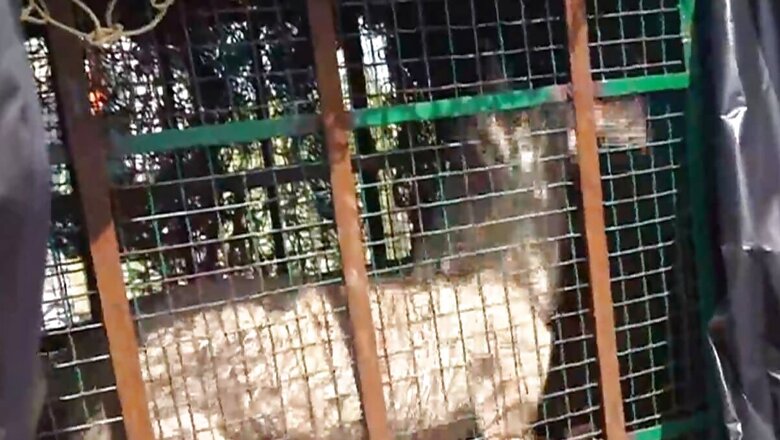
views
In Uttar Pradesh’s Bahraich, a series of wolf attacks have resulted in the deaths of 9 individuals, including 8 children, and injured at least 25 more. The situation has caused widespread panic across 50 villages in the region. Despite efforts from the forest department, which has successfully captured four wolves, two particularly aggressive animals remain at large. Authorities are utilising drones and night vision cameras in the ongoing search, and the Uttar Pradesh government has warned that if these wolves are not apprehended soon, lethal measures may be employed.
Understanding the Real Threat
Wolves are often portrayed as fierce predators capable of attacking humans. However, wildlife experts and biologists offer a different perspective. According to Siddharth Singh, a wildlife expert specialising in wolves, these animals are generally elusive and avoid human contact. Wolves are known for their shy nature and tend to remain hidden, primarily emerging at night. Singh emphasises that wolves are not inherently aggressive toward humans and typically only pose a threat when circumstances drive them to act out.
Why Have Wolves Turned to Attacking Humans?
Siddharth Singh explains that wolves may resort to attacking humans when they are injured or otherwise struggling due to conflicts with humans or other factors. In such cases, they might seek out easier prey, and unfortunately, young children can become targets. Once a wolf in a pack begins to prey on humans, others may follow suit. In the Bahraich incidents, one of the wolves is reportedly lame, suggesting it may have initially targeted humans out of desperation.
Why Are Only Young Children Targeted?
Wolves typically hunt animals smaller than themselves, such as young goats or lambs, which they can easily overpower and carry. Small children, particularly those around 2-3 years old, are similarly easy targets due to their limited ability to defend themselves. This vulnerability makes them more susceptible to wolf attacks.
Why Do Wolves Always Move in Packs?
Wolves are known for their social structure, and their tendency to move in packs is a result of their strong bonds with one another. Scientists explain that these bonds are deep and integral to their survival. The pack is led by the eldest or dominant member, who takes responsibility for guiding and protecting the group. Wolves have a natural aversion to being separated from their pack. Typically, a pack consists of 7 to 12 wolves, although some can number between 20 and 30, too.
Why Is It So Difficult to Capture Wolves?
Siddharth Singh noted that wolves are highly intelligent animals with excellent communication skills. They are extremely alert to even the faintest noises and are adept at hiding in their surroundings due to their relatively small size. This makes them hard to spot. Additionally, every wolf pack is led by an alpha wolf, whose capture is crucial for controlling the entire group. In the case of Bahraich, the alpha wolf may still be at large, which could explain why the attacks continue.
Some Interesting Facts About Wolves
- There are three species of wolves and approximately 40 subspecies found around the world.
- An adult male wolf can measure up to 6.5 feet in length, while a female wolf typically ranges from 4.5 to 6 feet.
- Wolves can reach speeds of 58 to 61 km per hour.
- A wolf pack can consist of between 7 and 30 members.
- Wolves have 42 sharp teeth, enabling them to kill their prey almost instantly.
- The average lifespan of a wolf is 6 to 7 years.
- In India, wolves are classified as endangered, with their existence facing significant threats.


















Comments
0 comment